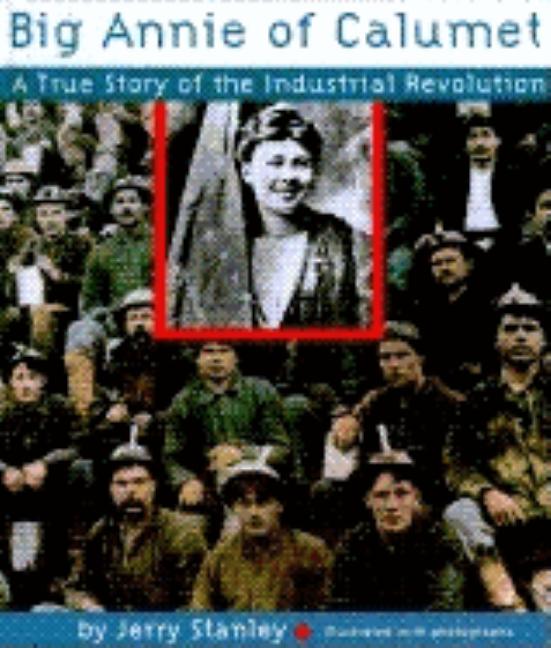Book Descriptions
for Big Annie of Calumet by Jerry Stanley
From Cooperative Children's Book Center (CCBC)
A strike became inevitable in 1913 after Copper Country mine owners refused a hearing to Upper Michigan miners organized to improve their wages and working conditions. Seven days a week for more than five months, 25-year-old Annie Clemenc marched carrying an American flag at the head of a protest parade. As a hospital worker, this woman had seen first-hand the injuries typically suffered by miners in cave-ins. As the wife and daughter of miners, she knew much about the dangers and deaths. In the early 20th century, U.S. workers had few legal rights to organize for safe working conditions and higher wages. Thousands of people ultimately became involved on both sides. The strike and ongoing parardes led to bitter economic repercussions for women and men engaged in the protest. Violence and bloodshed became common. While mining families were gathered for Christmas party, a false fire alarm caused 80 children to die in the surge of people fleeing the building. By highlighting the basic rights for which Annie and the protesters struggled, Stanley underscores the relationship between workers' rights and human rights. By focusing the narrative upon a previously unsung labor leader, he captures the strength and importance of women in the labor movement. The abundant archival black-and-white graphics contribute an important dimension to the compelling, fast-moving narrative. Informed adult readers might wish the author had found a way to acknowledge the unsalaried domestic roles of the women protesters, and they might also debate Stanley's generous version of Henry Ford's role. Big Annie of Calumet is an important book that brings to life an appalling, heartbreaking segment of U.S. labor history rarely detailed for young readers. (Ages 10-15)
CCBC Choices 1996. © Cooperative Children's Book Center, Univ. of Wisconsin - Madison, 1996. Used with permission.
From the Publisher
Illustrated with black-and-white photographs. Award-winning author Jerry Stanley tells a true story of the Industrial Revolution and the role women played in the early history of America's labot unions. Annie Clemenc was the wife of a miner in Michigan's Upper Peninsula. When the miners struck in 1913, Annie led them in daily protest demonstrations, only to suffer beatings and imprisonment. But her determination inspired the miners to continue to strike against great odds. Gripping and informative, this is a story that illustrates the experience of the industrial laborers who built modern America.
Publisher description retrieved from Google Books.


